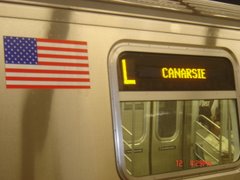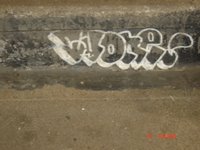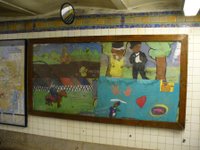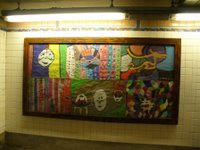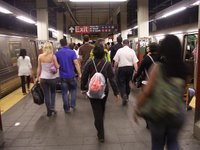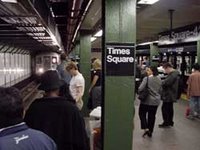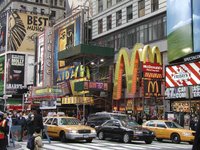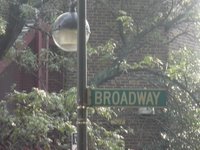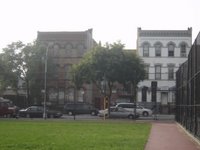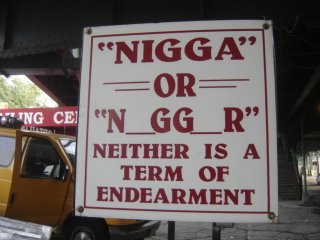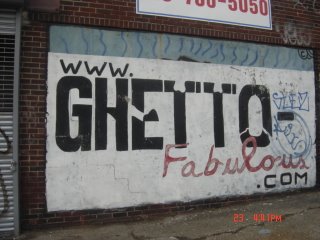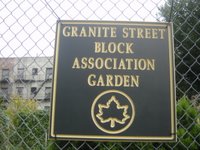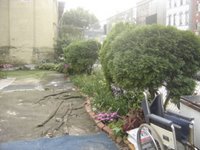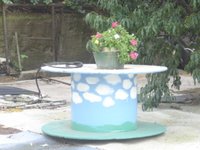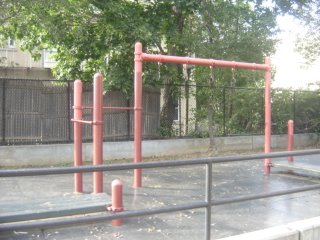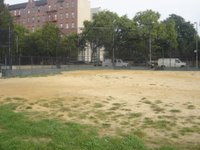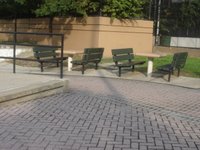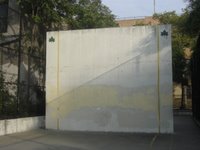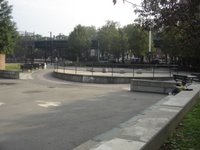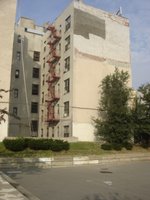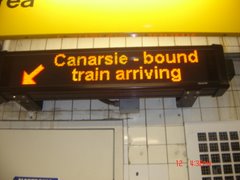Behind the looking glass:

“Why? Hmm…Girl, if I had that kind of money, I wouldn’t be here right now”, a thirty-something Metro Transit authority employee responded as her co-worker and her talked in the midst of no one had any obvious need or desire for any transportation assistance. Her eyes wander towards the clock in the center of the enclosed plastic box she waits patiently in for hours on end. They drift, her eyes, that is, and stare. Although she wears a watch, and has a cellular phone, she still checks this clock, as if something about it made it more official .When, for a second, she sees that I an staring at her in her activity, she glares at me with a watchful eye. I sit. I stare right back. She then pretends it never happened and she goes back to talking with her friend. I continue to stare at her talking to her friend. She wanders her eye towards me occasionally-wondering when I will be finished.
The original plan was something special. It would’ve been great. The plan was to interview MTA employees about their lives underneath the surface of the city. However, after several persistent attempts, it could not work out. Refusals were most common and those that did consider it for a minute changed their minds in the same minute. But this is only the most direct interview process. By taking an alternative twist, I interviewed them through action. While I could not observe the refusals or mind-changers, I still had several at my eye’s disposal. They would be my subjects and I, the researcher. And so, it began. I felt there wouldn’t be as many variables in the same station-so I chose the 8th Avenue station.
When one conducts an experiment or wants to do some observation, the intelligent thing to do is to analyze the surroundings first. Of course, in class, and in personal other observations, the subway has been torn apart with subjective and sometimes tangential experience. However, I decided to delve into the employee cages they call information booths. The silver metal edges of the booth are encased with walls of plastic. There is a microphone on each side and a small opening for transactions for metro-card change. Maps, papers, cards, a phone, and other useful items are spread across the desks inside with usually two attendants. This is certainly inaccessible. No other person, even if the station is public, is allowed to enter these rooms except personnel. Most of these booths are before the turnstile just in case someone needs directions-the waiting rooms and information booths that used to be in use became inaccessible due to graffiti and other crimes. Perhaps the employees needed a break-room. However, well explore this later. In any case, it is highly noticeable that these booths are not your usual cubicle and the area where these employees work is unique unto itself.
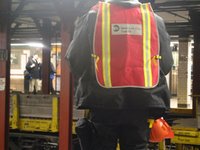
Not everyone works underground eight hours a day. There are of course, sewer and construction workers but still, they come up for air once in a while or bring materials constantly from the surface. These workers are in a box, underground, with limited contact of the outside world. Through their actions, their behaviors, their facial and body expression, it can be seen that the transit workers of the MTA system, face a unique obstacle in their work and how it affects their view of how fulfilled their life is. In the case of three booth workers, life can be tough, boring, and unfulfilling-perhaps even a hellish place to be. While their reactions to time they may not have to work may seem normal, it seems even stronger and more desired than most workers in ordinary jobs. ‘
At 10:30A.M. on a Saturday morning, “ Patricia”, (name unknown but this is for own purposes) a black woman with a sassy wit about her, sits at the desk in the booth going over some paper work and finishes off a line of Metro-card customers. After, she pulls away from the desk, and takes a sip of her morning coffee. She sighs and starts to speak to her fellow attendee. Their conversation is low, not to be heard, but her expressions are clear. She waits and waits, answering customers on directions and giving out cards. Yet, her eyes, are always wandering over to that clock on the wall. When it is finally noon she gets up n an instant and gathers her belongings. She opens the door to the plastic box and laughs. She says, “Well, I’m going to lunch, you want anything? I’m also going to take a walk”. It had been a very sunny day that day. As most workers need to punch out, she went her way to get her coat and bag from wherever the workers keep them and then leaves through the nearest exit, the one that I am near. She runs up the stairs and then finally, at the last step, takes a deep breath of fresh air, adjusts her hat, and walks out of plain sight.
What I can tell from this observation is that a worker cannot wait to get out of the station. Although she might have a friend to talk to and other customers for contact, she seems disconnected from the world. Later on in the day, as I came back to the station to check on her, she seemed very bored, head in hand and after another rush of subway riders and a particular person who could not seem to remember the directions she gave him to get to Queens, became irritated. It was as if all of the day’s frustrations and desire to get out of this underground was being bottled up and slowly was going to explode-but she needs to maintain professionalism so I figured I wouldn’t see anything too hostile. One cannot blame her or anyone else from getting tired from this task of sitting in a booth all day. Legs will get sore and body restless-as Patricia also repeatedly tapped her long pink nails on the desk making a clattering noise to be heard through the microphone as even I went up to get a Metro-card.
The service provided from her compared to asking directions of a conductor or other person in the subway near the track differs because it seems the one near the track that is there for guidance is free to move around is happier. He smiles. He laughs. He greets you with a pleasant demeanor. Maybe he had a good day, or maybe, every day is a good day because even though he has to work and it may not be fun, he feels a bit more comfortable rather than being confined to a single small place for a long period of time during the day.
Anyway, it seems that the space, this underground structure with a plastic box, not only makes other spaces inaccessible but also the people. There are no was to forge a connection with the employees of the Transit. It also seems as though the kinesthetic of the station and the booth holds people captive. Their emotions and energy build up and sooner or later they need to release it. Perhaps if the booth was made more friendly or bigger or even outside above the ground near the light, fresh air (still heated though), and near more people, the employees would feel better.
This notion of how the feel of an area and the accessibility is incorporated in the article, Public Places-Urban Spaces. How the workers feel has to do with their engagement, whether or not it is passive or active. How I became engaged when observing my subject was passive while talking with her was active or “spontaneous interaction” (166). How Patricia feel compared to the other worker is most likely factored on their engagement and the space. Peter, for our uses, the guide near the track, is not enclosed by walls- only the track and steps-but he can still move from person to person and roam the station. Patricia cannot. She is limited in her engagement. Her engagement is also very repetitive. She sells cards- which is superficial. She rarely gives directions in comparison to Peter. She may also forget directions or best ways to get places if the repetitive action of selling the cards put her into the mind set that that is her actual job-not to provide service but a means of getting into the station.
In terms of variability, it may be safe to say that these observations were made on particularly chaotic days (a few days of same-people watching); this would have certainly skewed results, or even the external life of the workers besides the station. But then again, I think it is reasonable to state that the environment, this space that these workers are in, influences their attitudes toward work. The claustrophobic walls and the dark space can make subway riders, but mostly the subway workers who are underground several hours a day, feel as if they are in a different world and disconnected to the world above them. Their quality of life while working diminishes and controls how they may act when in the “real world” above ground.
Finally, it is unfortunate for these observations, that I could not interview any one of them directly due to any personal or legal reason. However, it is fortunate that one can see these qualities and these actions in several of the Metro Transit Authority employees because many work in the booths. There is a pattern and a general feeling of how they think of the underground in which we travel. Hopefully, we can find ways of redesigning the space or improve conditions for these workers so they do not feel like they are cogs within a repetitive, un fulfilling machine full of dirt, rats, despair, and need for repair (especially on the L line).
